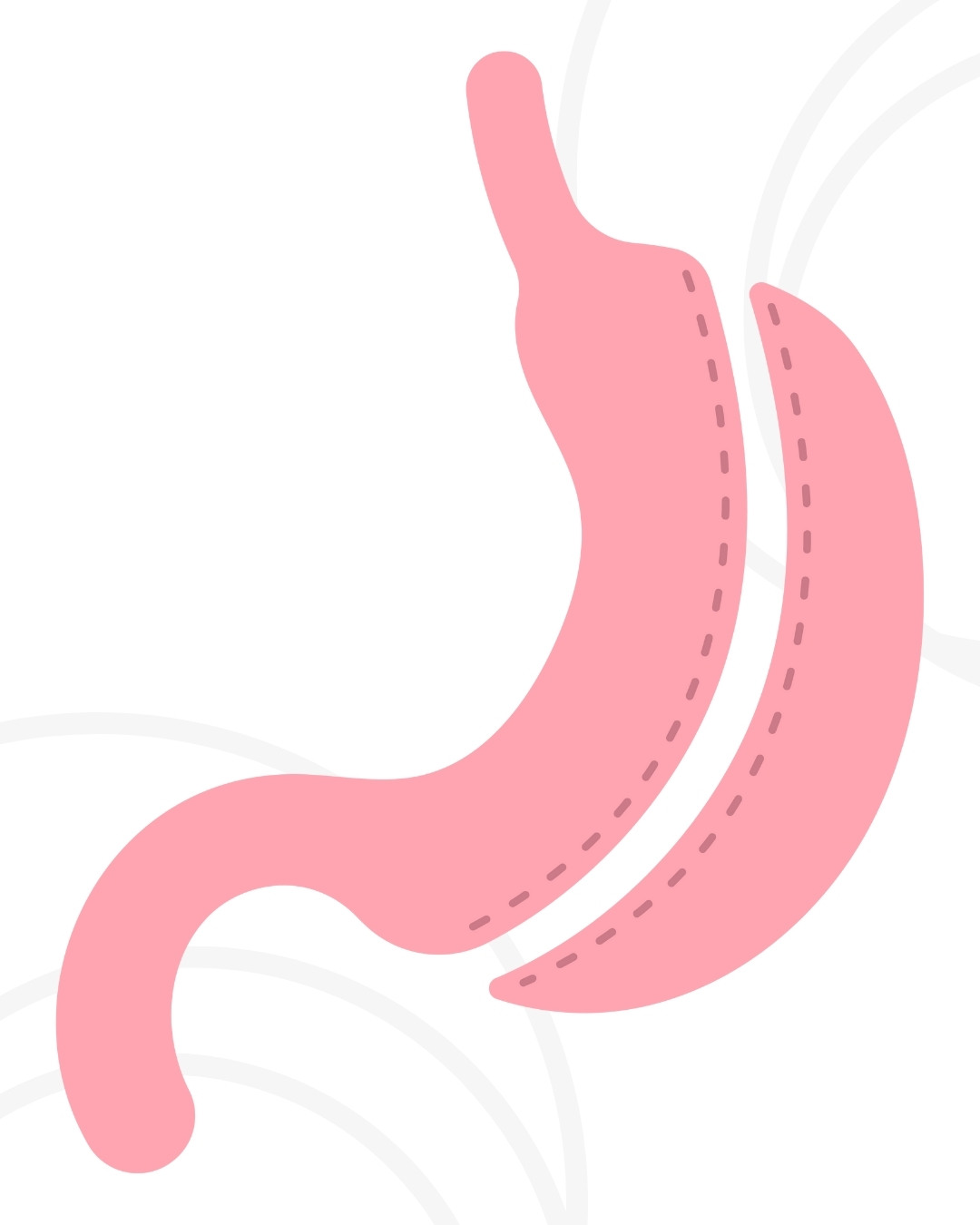
How does a gastric sleeve make you lose weight?
GASTRIC
SLEEVE SURGERY
Vertical Sleeve Gastrectomy
This surgical procedure induces weight loss using the restriction of food ingestion by making the stomach like a thin tube or a “sleeve”.
Technique and Function
The technique consists of a vertical extraction of the most distensible part of the stomach which makes it smaller and elongated, called a “sleeve”. This has a capacity of 80-120 ml (normal stomach is 1,000 ml), conserving the digestive function and the system fills and empties naturally. The weight loss follows by using the restriction of the amount of food that is consumed.
- Estimated reduction of 50-70% of the excess weight in five years after the surgery.
- Time for the procedures: 45 minutes.
- Time of hospitalization: 1 nights.
To prevent subsequent failure of the intervention it is necessary for the patient to cooperate in adjusting their lifestyle and is given nutritional guidance.
Vertical Sleeve Procedure
This procedure works by several mechanisms. First, the new stomach pouch holds a considerably smaller volume than the normal stomach and helps to significantly reduce the amount of food (and thus calories) that can be consumed. The greater impact, however, seems to be the effect the surgery has on gut hormones that impact a number of factors including hunger, satiety, and blood sugar control.
Short term studies show that the sleeve is as effective as the roux-en-Y gastric bypass in terms of weight loss and improvement or remission of diabetes. There is also evidence that suggest the sleeve, similar to the gastric bypass, is effective in improving type 2 diabetes independent of the weight loss. The complication rates of the sleeve fall between those of the adjustable gastric band and the roux-en-y gastric bypass.
Vertical Sleeve Advantages
- Restricts the amount of food the stomach can hold
- Induces rapid and significant weight loss that comparative studies find similar to that of the Roux-en-Y gastric bypass. Weight loss of >50% for 3-5+ year data, and weight loss comparable to that of the bypass with maintenance of >50%
- Requires no foreign objects (AGB), and no bypass or re-routing of the food stream (RYGB)
- Involves a relatively short hospital stay of approximately 2 days
- Causes favorable changes in gut hormones that suppress hunger, reduce appetite and improve satiety
Start changing your life NOW!
Reach out to our weight-loss surgery experts today!
